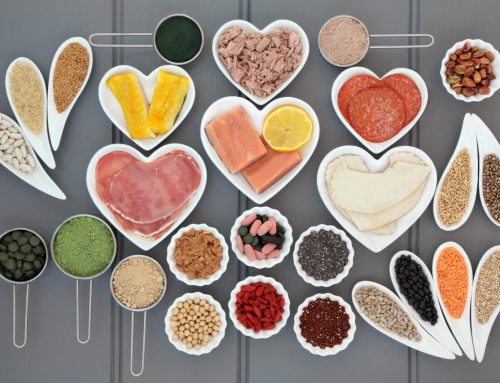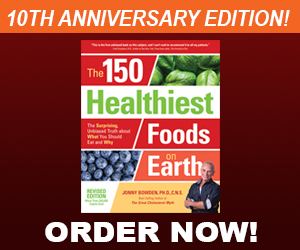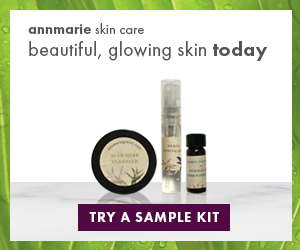Do you know about alpha lipoic acid?
If you don’t, then you’re missing out on a powerful anti-oxidant– one you should definitely add to your supplementation. It’s a powerhouse anti-aging nutrient – often referred to as “designer” nutrient since it’s next to impossible to get from food.
Dr. Nicholas Perricone, brilliant scholar and dermatologist known for his anti-inflammatory diet adds alpha lipoic acid to his line of skin products. One of my friends uses his skin products and looks 15 years younger than her age.
His products are very expensive – you can get great results supplementing with alpha lipoic acid which is not expensive!
This powerhouse not only works on its own by scavenging free radicals and protecting cells, it also helps regenerate other antioxidants such as Vitamin C and E.
It has multiple uses -diabetics use it to help manage blood sugar; it’s one of the best nutrients for the liver; and it’s also been found to be especially protective in the brain.
Bruce Ames, Ph.D., one of the most respected researchers in nutrition and biochemistry, first brought lipoic acid to our attention as a potential brain nutrient. He performed a series of experiments in which he gave aging rats a combination of acetyl-L-carnitine and lipoic acid.
Animals taking the mix performed better on memory tests and showed general signs of vitality.
“With these two supplements together, these aging rats got up and danced the Macarena,” said Ames. “Their brain looks better, full of energy-everything we looked at looks more like a young animal.”
Lipoic acid (the term is used interchangeably with “alpha” lipoic acid) helps regenerate glutathione, arguably the body’s most important antioxidant. Lester Packer, PhD, professor and senior researcher at the University of California for more than 40 years and author of The Antioxidant Miracle, calls alpha lipoic acid “probably the most potent naturally occurring antioxidant known to man”.
You might consider adding this wondrous product to a “basket of health goodies” this holiday season. We have two in the store.
I recommend the 100 mg Lipoic Synergy for general protection and health. For special issues like blood sugar, liver problems you can go much higher to Lipoic Supreme, 300 mg and comes with 4 mg of biotin (for blood sugar support) and 600 mg of taurine.
Speaking of baskets, a few people have asked what I’d recommend as a basic basket of health goodies. The basics, as we all know, are this a great daily multiple vitamin and of course, Omega-3.
If you really want to go whole hog, consider adding Whey Cool Protein, one of the finest protein powders on the market. Combine that with PaleoReds and Barlean’s Greens and you’ll have an extremely healthy synergistic combo.
Reds and Greens are concentrated extracts of some of the most important fruits and vegetables on the planet- nutrient heavy, good tasting, low in calories and a boon to health!
Remember to enter coupon, Christmas, to receive special savings!
As always, let me know what you think!














Dr. Bowden,
I am a bit perplexed about Whey Cool. In the past I have purchased it and gotten the sense that it was a fantastic product. But recently while reading some other websites I frequent I came across comments directed towards this DFH product that were anything but glowing and essentially claiming it was overly priced without being scientifically proven.
My question is if you have some solid ammunition, so that the next time I find myself confronted by comments like the ones I will transcribe below, I have an educated way of responding (sadly I am just not as articulate or brilliant on a level like experts like you, which is why I am posing this question to you)
“For Whey Cool: I contacted two prolific whey researchers and they both felt the product was a waste of money due to the amount of processing whey has to go through anyways.”
excerpted from
http://cassandraforsythe.blogspot.com/2009/10/manitoba-harvest-october-2009.html
and the following, which was a question posed to Alan Aragon in the Q and A section of an article he wrote for Lyle McDonald’s bodyrecomposition.com
“Reader Question: Essentially I am wondering if Whey Cool from Designs For Health is a superior product well worth the investment (and increased cost over many other whey products) or if I am throwing away money without due cause?
Specific to the question above is the line about the product
Hi Art-
These are terrific questions, and it’s not at all inappropriate to post it here- that’s why I have this blog and website!
I’ll do my best to answer you.
Let me start by saying some general things.
There are people who pay 1200 for handmade leather shoes. They appreciate and care about the fact that the leather was hand selected, that some Italian craftsman spent two weeks hand laboring over every stitch, etc etc.. (I’m not one of those people, but you get the idea.) The people who buy these shoes care about these things- others- like me– don’t. And still others see shoes as merely something to cover your feet and don’t see why you should spend a penny more than what you’d spend at Wal-Mart. Neither position is “right”– just different things are important to different people.
One more general comment before I specifically address the whey protein issue. As someone who has been on the planet probably more years than many of my readers, and has been in a variety of business situations (from music to nutrition) i have learned one basic principle: it is ALWAYS possible, when making any product or giving any service– to cut corners. When you cut corners, you make something cheaper (which is good) but you generally lose something else (which is not so good)– it’s a tradeoff. There are handmade pianos and there are Casio keyboards. Both make sounds. You get the point.. Even in vitamins- and I’ve been involved in a few meetings about vitamin formulas- it’s possible to use cheaper ingredients (magnesium oxide) or more expensive ones (magnesium glycinate). Both vitamin products can list “magnesium” on their ingredients label..
OK. I have known the people at Designs for Health since 1998. It’s one of the highest integrity companies I’ve ever dealt with. They used to be co-owned by Robert Crayhon, MS (one of the top nutritionists in the country) and Linda Lizotte, RD (one of the smartest dietitians i’ve ever known), then the Lizottes bought out Robert and he started his own company. Designs for Health has been one of the most consistently reputable, reliable and caring vitamin companie in the industry and I have never known them for a moment to cut corners on anything. They have a research department, they are constantly at conferences, they have a continuing education program for providers and health care practitioners, and are just a sterling example of how you can be a great company and still make money selling a fine, no-corners-cut product.
Whey Cool Protein is definitely more expensive than the stuff at GNC. One of the main selling points is that it comes from grass fed cows. To me, this is a make-or-break point. I spend 9.99 per pound at Whole Foods for grass-fed meat, and won’t buy any other kind. (Of course, i don’t eat it very often, but when I do, it’s grass-fed or none). Grass fed is WAY more expensive than feedlot farmed meat, because cows actually have to graze, they can’t be forced into pens and fed an unnatural diet of grain, and they are just generally very expensive to raise that way. However they also have no antibiotics, steroids or hormones, a higher content of omega-3 fat, CLA (I’ll get to that in a moment) and lower levels of inflammatory omega-6’s.
From the point of view of amino acid profile, i’d probably agree with you- the 10 buck a tub kind and the Rolls Royce kind are probably not much different, any more than from a PROTEIN point of view a McDonald’s one dollar happy meal and a grass fed burger from New Zealand are any different. But if you care about the other stuff- as i do- there’s a world of difference. (By the way- omega-3’s from salmon contaminated with PCBS and omega-3’s from wild pristine Alaskan salmon are still omega-3’s; again, the difference isn’t in the quantity of omega-3’s, but in the overall quality of the product.)
Now on to the commentary:
First let me say that i have enormous respect for Cassandra Forsythe, who i know well and admire. She is very, very smart. Notice though that the person writing her says “I’m usually allergic to whey protein but can tolerate this Whey Cool Protein quite well”.. that’s one piece of info worth noting. Note also that Cassandra says she doesn’t have any experience with this particular product. She asked two whey researchers and I have to say that if you asked two other researchers they might have different opinions. As i said earlier, there are always ways to cut corners, and the statement “there’s so much processing it doesn’t matter” just doesn’t pass the smell test. Olive oil requires processing too- you can get generic olive oil, processed at high heat with chemicals, or you can get extra virgin olive oil which is a very different substance. HOW you process makes a big difference (or else why am I buying extra virgin cold pressed olive oil?)
On to Alan Aragon. Alan and I are both affiliated with Men’s Health and although I’ve never met him, many people I respect like him a lot. That said, I have frequently found myself on the opposite side of a lot of his positions- which happens ALL THE TIME in science, research, opinion, politics, you name it..
Note also that it is kind of an unspoken rule in magazine publishing that you don’t dis the advertisers. All the companies he mentions are advertisers- as you might know, Designs for Health not only doesn’t market to “naiive bodybuilders”, it doesn’t market to consumers AT ALL.. it is exclusively available through health practitioners.
As far as Alan’s comment on “lab analysis of the whey” this is disingenuous. As I said earlier, a “lab analysis” of the omega 3 content of contaminated fish and pristine fish would probably both show the same omega-3 content. That’s not what this is about. Even his comment about buying milk is not accurate- raw organic milk costs a HELL of a lot more than Borden’s, and that’s all i drink and with good reason. They are not the same food.
Finally, while Alan is certainly entitled to his opinion, he is just plain dead wrong about CLA and I’m surprised by his comment. The NATURAL STANDARD, which is widely considered to be one of the most rigorous and reputable sources for independent research evaluation gives CLA a “B” rating for “GOOD SCIENTIFIC EVIDENCE” on CLA for BOTH cancer AND weight loss (obesity). (A “good” rating means there is good scientific evidence, and that rating is incredibly hard to achieve from Natural standard- the only thing better is “EXCELLENT”.) NaturalDataBase says the same thing, and even a cursory check of the VITASEARCH data base or- and you can check this yourself- PubMed (the National Institute of Medicine library, online) will return pages and pages and pages of CLA studies most of which are positive. Harry Preuss, MD, the president of the executive committee of the American College of Nutrition (of which I am a member) has done great research at Georgetown on CLA and is a big supporter. Alan is probably talking about a couple of studies done a while ago in which a specific ISOMER of CLA was found to increase insulin resistance in diabetic men, but that isomer is rarely found in commercial CLA supplements. Sorry, but Alan is dead wrong on this one.
To conclude, I’m not trying to sell you Whey Cool Protein. If price is an issue, there are good brands available through regular outlets- my favorite is Jay Robb’s. And if simply getting good quality protein is the issue and you don’t much care about the grass-fed issue, then you should definitely get that. But I stand by the quality of everything Designs for Health makes, and believe that it is worth the extra money- at least for me.
warmly
jb
I don’t know if this is really the right place to post this, but I tried to at least find an article about supplementation to ask what you thought about this article:
The Vita Myth
Do supplements really do any good?
By Emily Anthes
http://www.slate.com/id/2240688/
Hi Donovan!
I started reading it but by the end of the first page i had found so many distortions and so much incomplete information that I gave up trying to document it. What you need to know is this: There is a ton- repeat TON- of research on vitamins, phytochemicals, nutrients, of all shapes and sizes. Literally thousands of papers. Some are very positive, some are neutral, some are not. It is possible to cherry pick this evidence and come out with any conclusion you want, much as people do with global warming, the war in Iraq, you name it. This of course is very confusing for the average consumer. So we all “read” the evidence differently. For example, let’s say a study came out showing omega-3’s are useless for preventing divorce. So you read a headline from some writer that says “Omega-3’s found useless”. That’s pretty much what happens in a lot of this stuff. I’m using a ridiculous example, but there are subtle variations of this found ALL THE TIME.
These writers are not experts but merely reporters who depend on what people tell them. If you ask Dick Cheney about national defense you will get one answer, if you ask Robert Gibbs or the President you will get another. The reporter usually knows nothing- if they ask conventional medicine people- or those robots from the American Dietetic Association- they will get one opinion. If they ask me, they will get another.
In my opinion, supplements are a wise investment.
warmly
jb
Great article, thanks for posting!
I’m not a doctor or a person related to the science field but one thing is certain for me. It is really essential to supplement the body. For one taking supplement is the only fight against free radicals that could harm our healthy cells. I take a complete supplement everyday because I believe that I can be protected. Thanks for this info. It’s additional knowledge for me